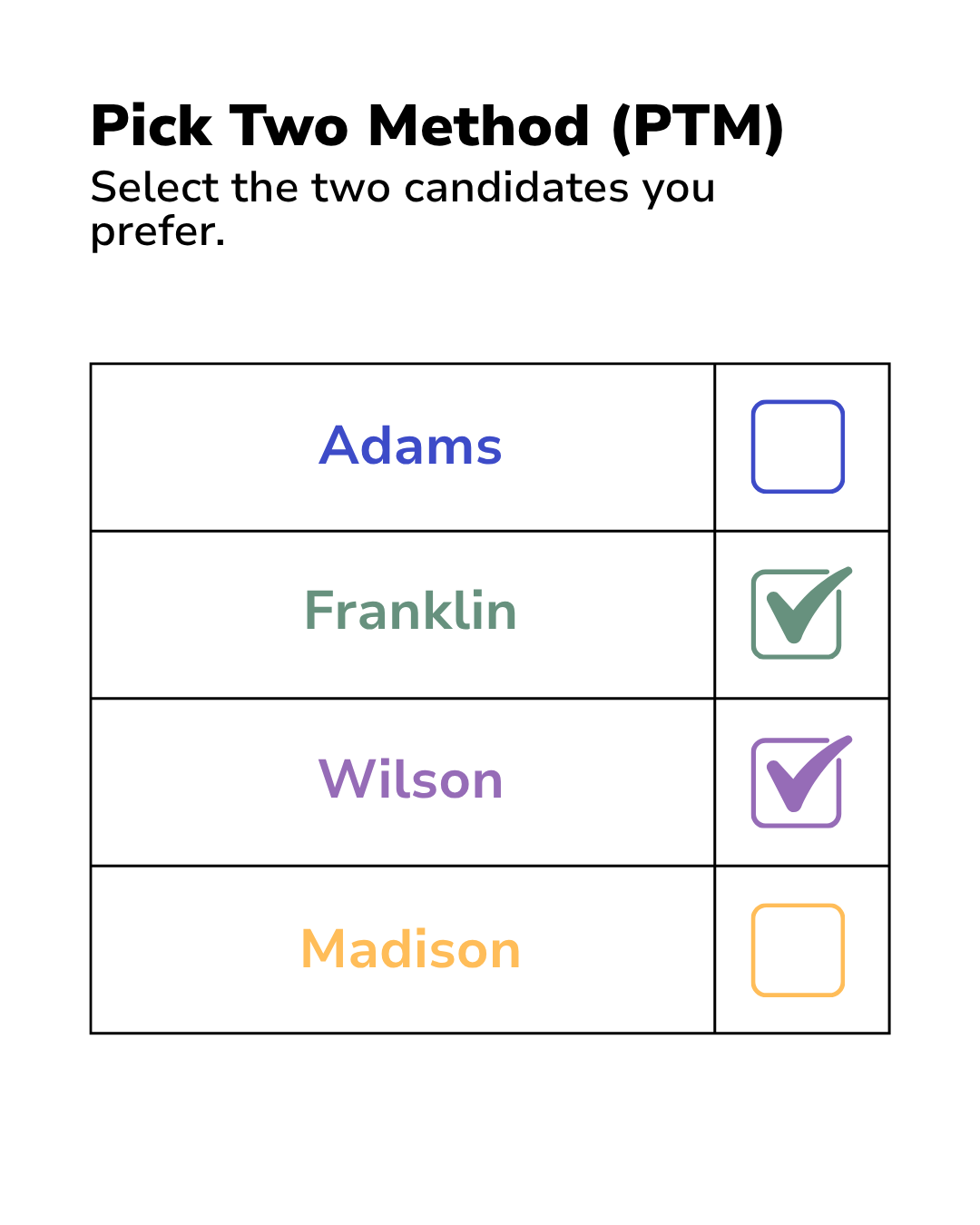Pick Two Method (PTM)
The Pick Two Method requires that constituents pick two out of four PNs that they’d most like to see in the Debate Round. As this method is specific to the Wilson’s Fountain system, there is little research on its viability. There are similarities with methods like Supplementary and Limited Voting (ERS, 2025)(Nonprofit Vote, 2025), the PTM is fundamentally different as the two choices are not ranked by preference. Therefore, much of the below evaluation will consist of likely hypothetical scenarios.
Practical Positives
Like some of the other methods evaluated in this paper, one of the major strengths of the PTM is that it is easy to comprehend. Picking two options out of a field of many, such as ordering two items for lunch or side dishes for your main course, is something that Americans do almost daily. It should be quite easy for constituents to adapt to this method.
Analytical Positives
Compared to plurality voting, the PTM offers constituents much more of a choice when selecting PNs. The PTM is also a majoritarian method, meaning that the two PNs chosen by constituents to move onto the Debate Round under the PTM will often be preferred by a majority of the electorate.
Practical Negatives
Since this method is relatively new, operating it with a large electorate like that which the National Party is expecting for the selection contests may create some unforeseen issues. Whether or not such issues have a significant negative impact on the contest and its results remains to be seen.
Analytical Negatives
One of the major problems with the PTM is that it leaves room for constituents to select PNs strategically. Primarily, it provides an opportunity for burying to occur; it is much more advantageous for constituents who are part of a dominant majority bloc to select a weak candidate along with their favorite rather than their two favorites to create the best possible chance of an election win. This practice is quite common, though in a different form, in gerrymandered states throughout the country, with dominant parties funding the campaigns of opposing extremists to give themselves the best possible chance of winning in the general election.
Moreover, as a majoritarian method, even if constituents behave honestly, there is a significant chance that the results of any Virtual Town Hall Round will reflect only the choices made by the majority (make a note clarifying the intention but explaining why it remains in this section). A lack of minority representation is a major drawback of most majoritarian voting methods. That said, considering the fact that the winning potential nominees will be sent to another runoff, representing the minority of constituents is significantly less important than if selected potential nominees were winning the contest outright as a result of this round.

